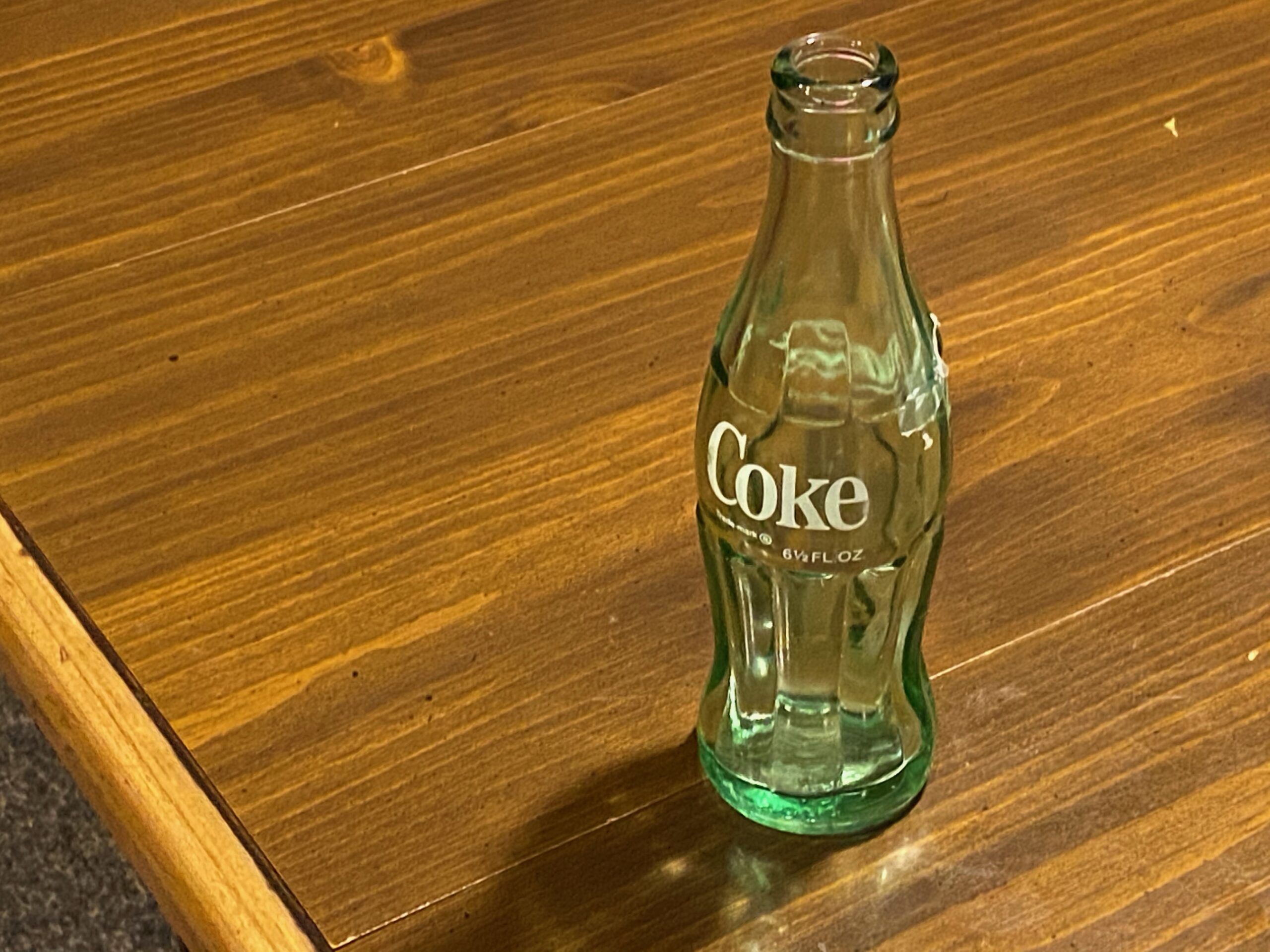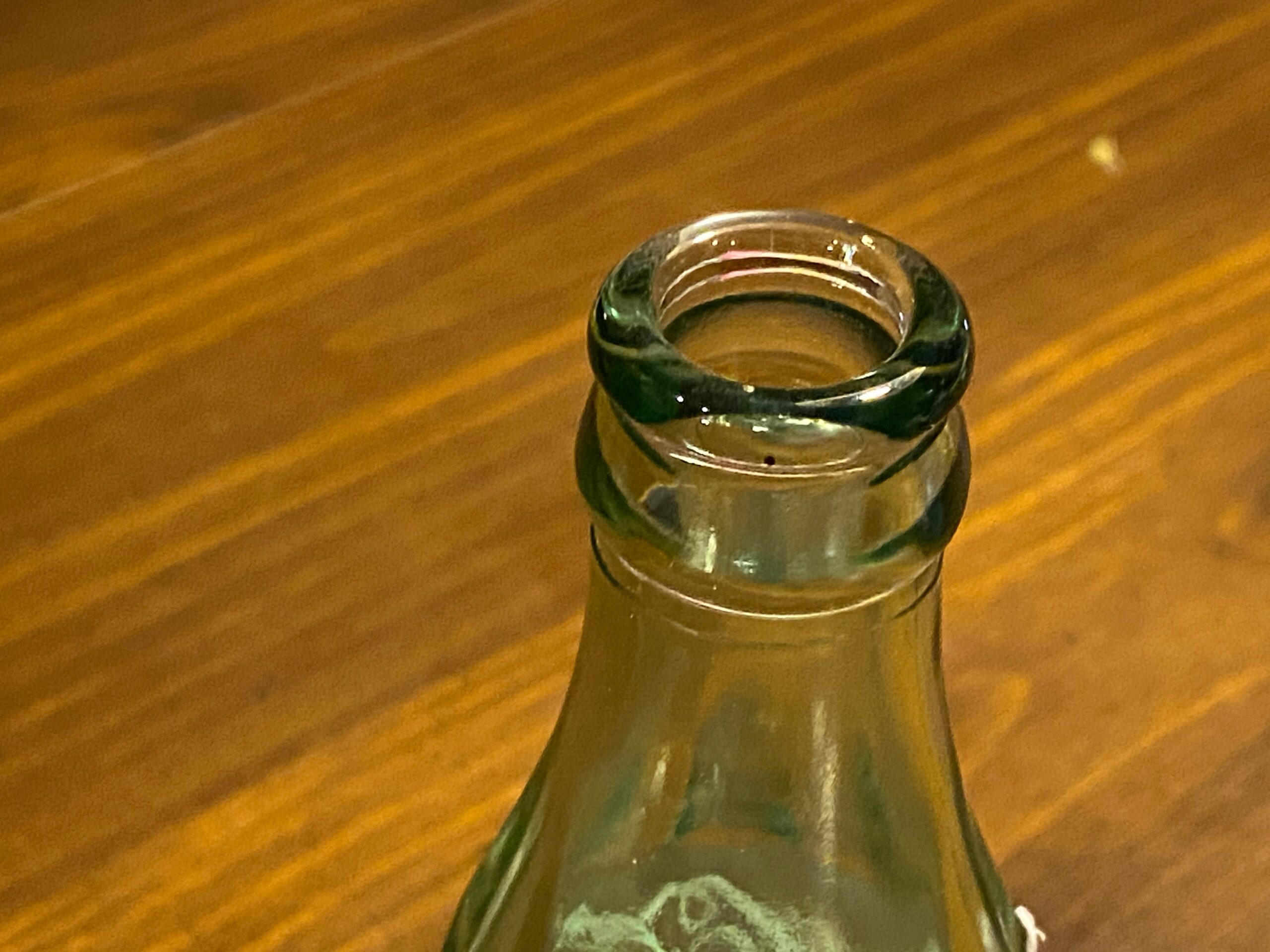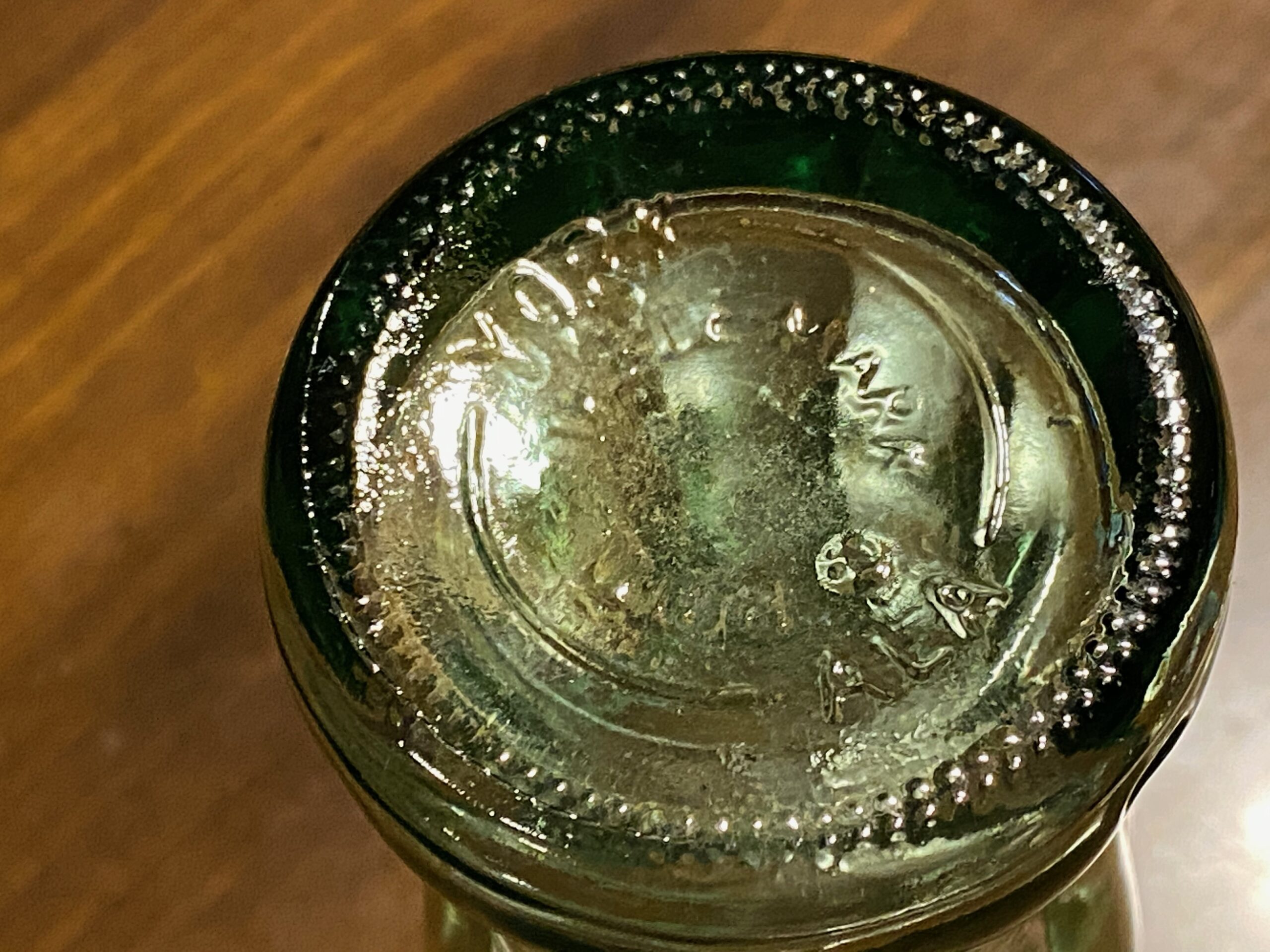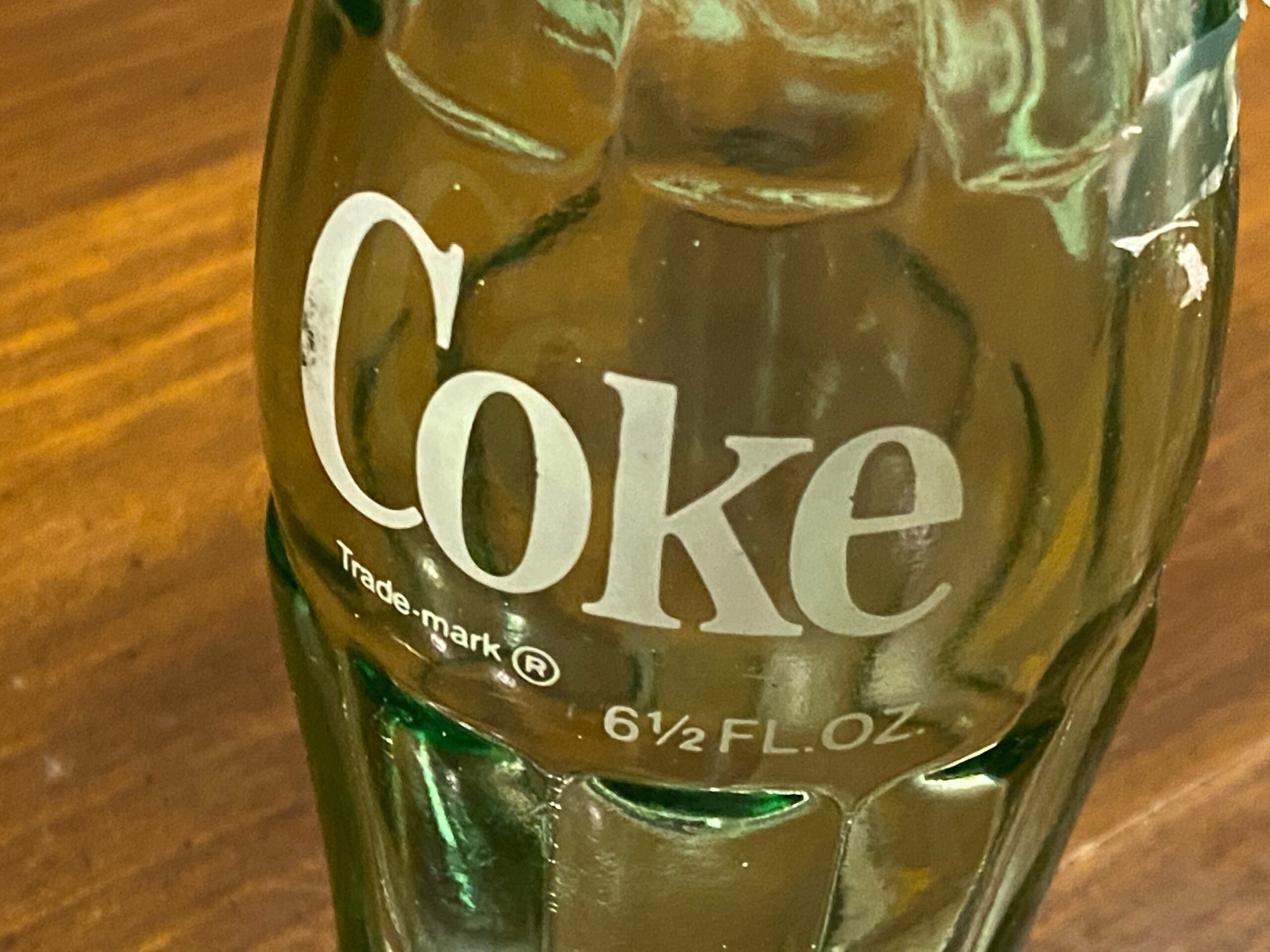Vintage Coke bottle (can you help me determine what year this is from?): 27,900 ppm Lead in the painted logo. 90 ppm (& up) is illegal in items used by kids.
For those new to the Lead Safe Mama website:
Tamara Rubin is a multiple-federal-award-winning independent advocate for childhood Lead poisoning prevention and consumer goods safety, and a documentary filmmaker. She is also a mother of Lead-poisoned children (two of her four sons were acutely Lead-poisoned in 2005).
- Tamara owns and runs Lead Safe Mama, LLC — a unique community collaborative woman-owned small business for childhood Lead poisoning prevention and consumer goods safety.
- Since 2009, Tamara has been conducting XRF testing (a scientific testing method) using the exact instrumentation employed by the U.S. Consumer Product Safety Commission to test consumer goods for toxicants (specifically heavy metals — including Lead, Cadmium, Mercury, Antimony, and Arsenic).
- Since July of 2022, the work of Lead Safe Mama, LLC has been responsible for 5 product recalls (FDA and CPSC).
- All test results reported on this website are science-based, accurate, and replicable.
- Items that Lead Safe Mama, LLC reports on are tested multiple times to confirm the results published (for each component tested).
- Recent notable press… There has been too much to mention already in 2024! Please check out our press page to see some of the amazing coverage of our work so far this year!
Published: October 14, 2020
Vintage Coke Bottle
I do not know the exact age of this bottle (readers have made suggestions in the comments below). It was purchased for $3 at an antique store and sold as “vintage” – amidst a collection of other vintage bottles, but to me it looks just like the modern glass Coca-Cola bottles that one can still buy today. Given this was sold as vintage, even though I don’t know the exact year of manufacture I was not at all surprised to learn that some vintage Coca-Cola bottles (with the one pictured serving as an example) are painted with Lead paint nor was I surprised to learn that the thick green-tinted bottle itself is also positive for some amount of Lead. I fully expect for Coca-Cola to go after me for reporting these findings (but wouldn’t it be refreshing if they instead made a public statement thanking me for these findings and making a commitment to do better in the future!) 😉
The full XRF test results of the vintage glass 6-1/2 ounce Coca-Cola bottle are below.
White painted logo-markings on the exterior of the bottle:
60-second test
- Lead (Pb): 27,900 +/- 700 ppm
- Barium (Ba): 120 +/- 42 ppm
- Iron (Fe): 360 +/- 124 ppm
- Titanium (Ti): 9,128 +/- 730 ppm
- no other metals detected.
Unpainted green-tinted glass of the bottle:
60-second test
- Lead (Pb): 110 +/- 12 ppm
- Iron (Fe): 681 +/- 125 ppm
- Titanium (Ti): 401 +/- 109 ppm
- no other metals detected.
How much Lead is “too much” Lead?
…including some “Fun Facts”:
- Newly-manufactured items (made today) are considered unsafe for children to use if they are finished with any paint or coating that is 90 ppm Lead or higher.
- Substrates that test positive for 100 ppm Lead (or higher) are considered unsafe for children.
- There is currently no regulatory standard setting limits for Lead in paint on modern consumer goods intended for use by adults. [Questions that come up here: Is a Coke bottle intended for use by kids or by adults? How many years did Coca-Cola use Lead-painted markings on their bottle? Have they stopped doing this yet? (Are modern glass Coca-Cola bottles also painted with Lead paint?)]
- When Lead-based paint was banned in 1978, the requirement was that paint for residential use (paint for houses, applied in areas that could be reached by children) must henceforth contain less than 600 ppm Lead.
- The allowable level of Lead in house paint was subsequently lowered, and today modern house paint must also be below 90 ppm Lead [and most house paints now usually test completely negativefor Lead].
- Federal funds are allocated for interventions in pre-1978 housing (for low income families) when the paint is positive for Lead at a level of one milligram per square centimeter [this is roughly equivalent to a high-precision XRF instrument reading of 5,000 ppm Lead].
So if this Coca-Cola bottle were manufactured today and considered to be “an item intended for use by children” it might be considered to be illegal (in violation of current regulatory standards set by the U.S. Consumer Product Safety Commission.) If it were ostensibly considered to be “an item intended for use by adults” (which it probably would be) it would not be deemed illegal. HOWEVER, since it is technically food packaging – there may be no circumstances under which it would be considered illegal as food packaging (and specifically lead painted markings on glassware made today) is not an area that is well regulated when it comes to limiting the presence of toxic heavy metals. That said, it is a well-known fact by now – but still bears repeating – that it literally just takes a microscopic amount of Lead to poison a human being!
Can you help me do a little detective work on this one?
If you know about the history of these bottles and can share any information with me that will help me determine the exact age of this bottle (or at least a possible date range for the year of manufacture), that would be excellent. To help my readers help me with this I have included images detailing the shape of the top of the bottle and the markings on the base of the bottle (above). I would love to test Coke bottles from different years to determine when (if?) they stopped using Lead in their painted markings (and also how high the Lead levels in the glass might be.) I often find Lead painted markings on brand new glassware products (including glass food packaging – like reusable glass milk bottles), so I would not be at all surprised if they are still manufacturing glass bottles with Lead painted markings.
What I have found out so far:
- c.1979? This video has a Coke bottle from about 1979 (“sometime before 1980”) and the bottle in my post looks just like it: https://youtu.be/Tra_8pQF4zA
- post-1956: This video has Coke bottles through 1956 and the bottle in my post is definitely newer than these bottles as it has modern painted markings (and the bottles from 1956 and before do not appear to have painted markings similar to these): https://youtu.be/tRhY6qfhbb0
- Post-1985: A reader named Sherri commented on the Lead Safe Mama Facebook page that: “the block style Coke logo didn’t start until 1985”
- 1990s?: Since posting this last night a reader named Lyz (who is a Coke bottle collector) got back to me with the following comment: “It was bottled in York, AL and probably a 90s bottle.” She came to this from the detailed information pressed in to the bottom of the bottle. Lyz also added: “The “Coke” print on the reverse side is post 80s era. Also, Coca-Cola began making retro bottles (with embossed bottling locations on the bottom) around that time. I don’t believe this bottle is antique.”
- Late-1990s? Possibly “Vintage” (20+ years old) but definitely not “Antique” (50+ years old)! I asked Lyz if she had any more information and she added this: “I’ve been collecting since 1984 and I remember the word “Coke” was printed differently in the 80s. This shape bottle was pretty uncommon in the 80s. In the 80s a taller hourglass bottle and the short bubble bottle with styrofoam label was common. The short hourglass bottle was brought back in the 90s but the bottoms (on the retro hourglass bottles) weren’t embossed until quite a few years later. The word “Coke” on the later bottles became curvy and slightly less block.”
- Here’s my post discussing the distinctions Vintage and Antique from a collectors perspective.
Here are some links my readers and friends shared with me to help date this bottle:
- Glass Manufacturer’s Marks on Coke Bottles
- A website dedicated to Bottle Bases
- Society for Historical Archeology has some good information on bottle identification!
- Another site about collecting old Coca-Cola bottles!
- I’ll be happy to add more reference links here for those who want to share them with me!
As always, please let me know if you have any questions and I will do my best to answer them personally as soon as I have a moment. Thank you for reading and for sharing my posts.
Tamara Rubin
#LeadSafeMama

Never Miss an Important Article Again!
Join our Email List













I have found an Liberty Glass Co. 6.5 oz. coca cola bottle from 1962 with Natchitoches, LA on the base containing L-G on the base and the date on the skirt which was said not to exist in the online study. They’re both supposed to be on the base. i have it if interested thought id let you know. Travis